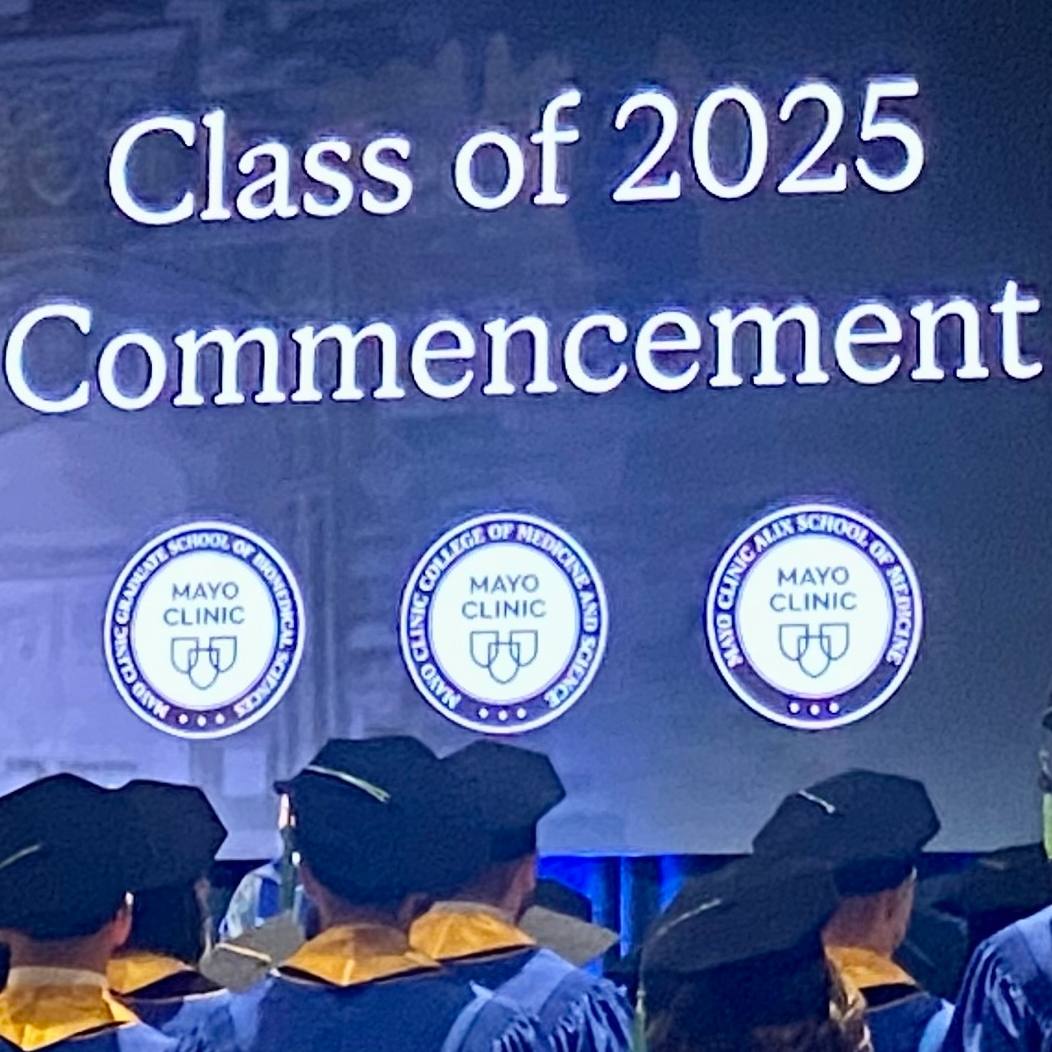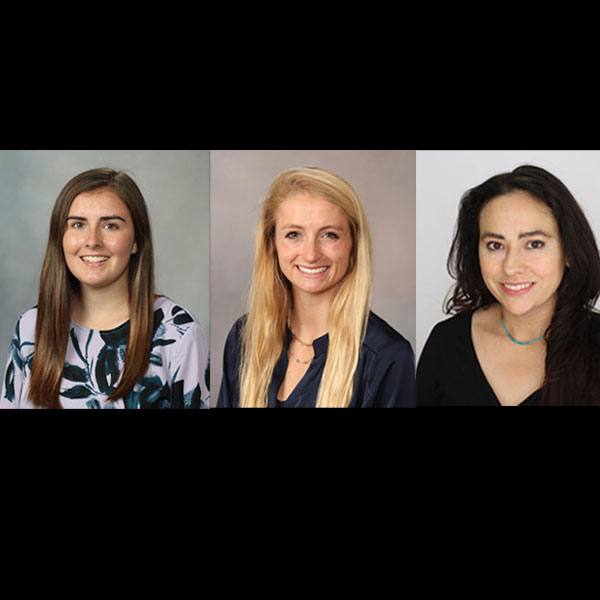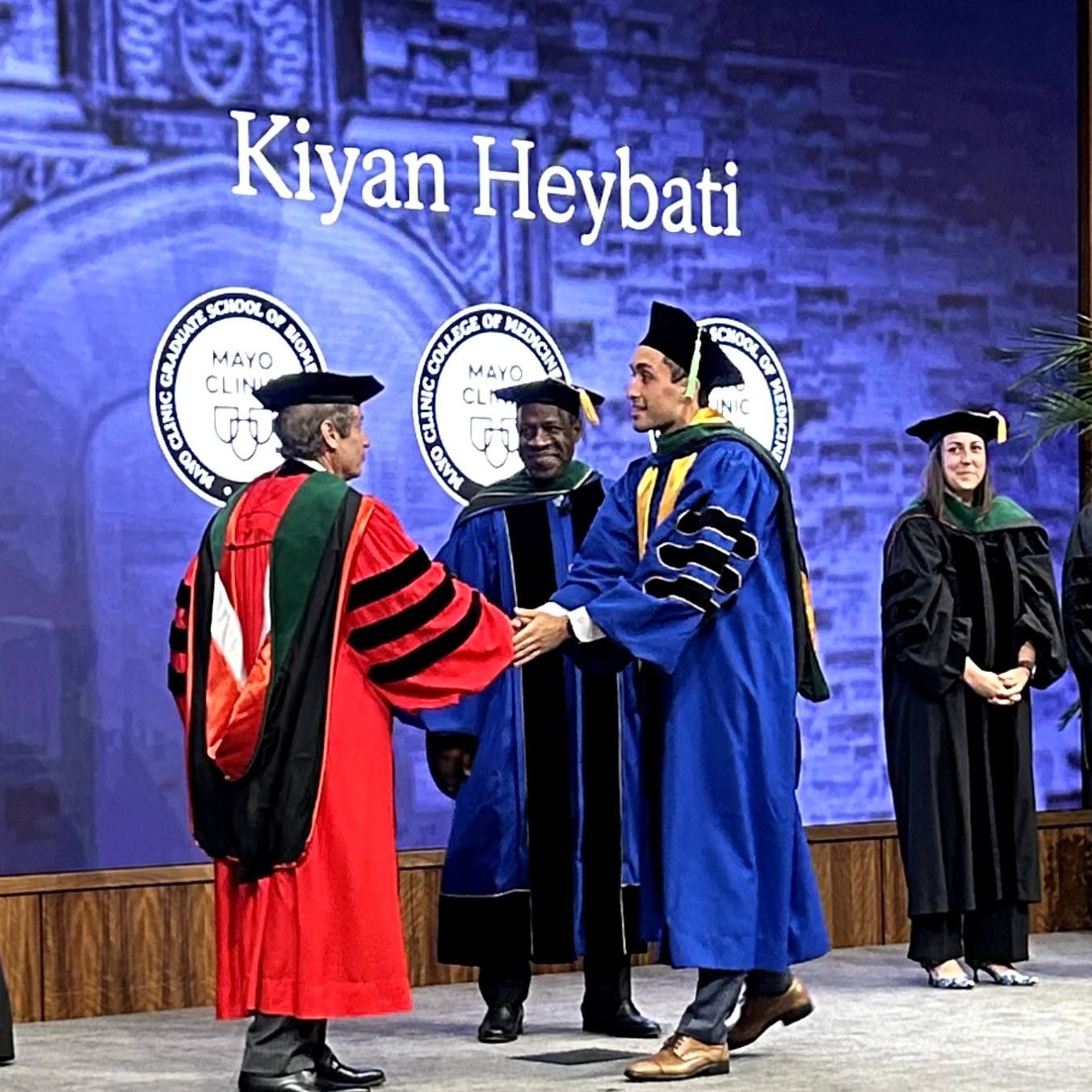-
Discovery’s Edge: Achieving his dream of becoming a biomedical researcher
Overcoming adversity, Yeng Her achieves his dream of being a physician and biomedical researcher.
Yeng Her spent the first 10 years of his life in a refugee camp. When his family arrived in America, he did not speak English and had never attended a formal school. Motivated by early hardships, he was determined to make a better life for himself and his family.
On May 20, 2017 he graduated from Mayo Clinic’s Medical Scientist Training Program, becoming the first Hmong American with both an M.D. and a Ph.D. (in biochemistry and molecular biology), according to Hmong St. Paul, a blog that tracks Hmong Americans who have received a doctorate.
“I want my story to be an example of many people’s journey to achieve the American dream,” he says. “We’re just like any other immigrants who came to this country before us. We’re looking for opportunities.”
Like many immigrants, Her has used education as a path to success. The combined M.D.-Ph.D. program, offered by Mayo Clinic Graduate School of Biomedical Sciences and Mayo Clinic School of Medicine, trained him to be a physician-scientist able to translate scientific discoveries into applications that improve patient care.
Along the way, collaborative initiatives by Mayo Clinic and the National Institutes of Health (NIH) to increase diversity among investigators in both basic science and clinical research supported his aspirations.
“Our collaboration with the NIH to identify biomedical scientists with excellent potential and enhance their probability of success lies at the core of Mayo's programs for training scientists from underrepresented groups,” says Jim Maher, Ph.D., dean of Mayo Clinic Graduate School of Biomedical Sciences and the Bernard Pollack Professor of Biochemistry & Molecular Biology. “Yeng is an ideal example.”
Through these programs, Her and other students from underrepresented groups gain research experience in cutting-edge biomedical laboratories, additional communications training, social support, leadership experience, and mentors who can assess potential, offer guidance, and champion their careers.
“I am so grateful to Mayo for helping me reach my goals. I could not have accomplished this without Mayo’s support,” says Dr. Her.
The Making of a Physician-Scientist
This unusual journey to becoming a physician and biomedical researcher spans 8,000 mile and 33 years, including the last 10 at Mayo Clinic.
During the Vietnam War, the United States recruited the Hmong, an indigenous people who had no country of their own, to combat communist forces in Vietnam and Laos. After U.S. troops pulled out of Southeast Asia in 1975, the Hmong fled persecution, settling in refugee camps in Thailand. Her’s parents met, married and raised four children in refugee camps.
“As refugees, we depended entirely on the international aid community for food, water, and clothes,” recalls Her, who was born into a life of poverty, overcrowding, poor sanitation and no education.
Everything changed in 1994, when the family immigrated to the United States, but difficulties with language, culture and employment quickly emerged. His parents, who never went to school, had trouble getting work in California, so the family joined relatives in Madison, Wis., where his parents landed manufacturing jobs. Despite no English skills and no previous schooling, Yeng was placed in fifth grade. He felt lonely and afraid.
“It was extremely tough,” Her says. “These became motivations for me to work harder in school and to never give up on my dreams.”
After high school, he completed a bachelor’s degree in chemistry at the University of Wisconsin-Madison.
“I have always been curious about how things work, particularly anything related to science,” says Her.
Help for Promising Researchers
Her then enrolled in the Postbaccalaureate Research Education Program (PREP) at Mayo Clinic Graduate School of Biomedical Sciences. Developed in 1997 by Mayo Clinic and NIH, PREP trains promising future researchers from underrepresented groups for the rigors of academic research programs. Her chose to apprentice with Dr. Maher, whose research laboratory studies the nucleic acids DNA and RNA.
“It was a really good learning experience,” Her says. “I was learning how to design experiments to answer scientific questions, how to write a scientific paper, how to present my findings. It helped me tremendously.”
The experience also confirmed that Her has a passion for research and discovery. During a second year of PREP, he strengthened his candidacy for graduate school. It paid off when Her was accepted into Mayo’s Medical Scientist Training Program — one of only 170 students to make it into NIH-funded training at 45 M.D.-Ph.D. programs nationwide.
“Diversity in perspective and experience is essential for excellence in scientific research,” says Dr. Maher, who saw survival skills and exceptional bravery in a young man who overcame refugee camps and immigration. “In my opinion, these experiences created several differentiators in Yeng’s life — acceptance of risks, determination to succeed at great personal cost, willingness to thrive in unfamiliar environments, experience learning a new language, acquisition of skills to guide care for elders less assimilated in a culture, and a sense of appreciation with a desire to give back.”
After two years of medical school, Her began work on his Ph.D. Once again, Her was drawn to molecular biology and Dr. Maher as a mentor.
“I love the way he allows students to be in charge of their own project — from formulating scientific questions to designing and troubleshooting experiments. He fosters a great learning environment,” Her says.
During the next two years, the Initiative for Maximizing Student Development (IMSD), another Mayo-NIH program geared toward helping students from underrepresented groups complete graduate school, provided a supportive environment for Her.
“I believe Yeng’s path to the MD-PhD would simply not have been possible without these opportunities to discover and confirm his skills,” Dr. Maher says. “It was a privilege to be a part of IMSD,” Dr. Her says. “It provided an educational opportunity and a place for me to feel safe. I was among friends and could seek support and advice from people that understood my story.”
Choosing a Specialty
After four years in Mayo’s graduate school, Dr. Her completed his final two years of medical school. He eventually decided to specialize in physical medicine and rehabilitation (PM&R).
“I want to go into PM&R because of my passion to help people regain function,” he says. “As a child growing up in the refugee camps, I saw many people with war-related injuries who did not receive the medical care that they desperately needed. That planted a seed to make it a goal of mine to help these people in my career.”
Dr. Her (now married with two young children) begins a year of preliminary medicine at the UCSF (University of California, San Francisco) Fresno Center for Medical Education and Research.
“This is a great match because of the opportunities to work with Hmong and other immigrant groups,” he says of Fresno, home to the nation’s second-largest Hmong population behind Minneapolis-St. Paul. “This is a perfect opportunity to give back to my community.”
After a year, Dr. Her will return home to Madison, Wisconsin, for a PM&R residency at UW Health, the University of Wisconsin-Madison health system, where he plans to pursue research on the use of stem cells to treat chronic pain.
- Jon Holten, May 2017








